Remote Jobs HiringIn the ever-evolving landscape of work, the concept of a remote career is becoming ever more popular. Remote work has already doubled and is expected to increase by more than 87% by 2025, according to the employment platform FlexJobs. The pandemic played a big role in the increase, but there are other factors too. Cutting down on commuting helps fight climate change and may lower turnover. A Forbes survey found that 97% of employees don't want to return to the office full-time. If you're job hunting or about to start, you have more options than in the past. Learn how to make remote work part of your criteria for finding a new position. A List of 54 Websites with Remote Jobs HiringBelow is a list of 54 specialized websites currently listing remote work:
Finding Remote Jobs
Negotiating to Make Your New Position Remote
When asked if they enjoyed working from home, 82% of workers agreed or strongly agreed, according to another survey by Forbes. Many studies show that productivity remains high too. Finding a remote job could turn out well for you and your next employer. SOURCE: https://www.market-connections.net/blog/remote-jobs-hiring About the AuthorMandy Fard is a Certified Professional Resume Writer (CPRW, CMRW) and Recruiter with decades of experience in assisting job seekers, working directly with employers in multiple industries, and writing proven-effective resumes. When asked for a resume for a board position, you might wonder how it's different from a job resume. Writing a resume for a board position requires understanding your target audience. Whether corporate or nonprofit, industry-specific, or skill-focused, knowing how board members are recruited and what they seek is key. Tailor your resume's tone, content, and keywords accordingly. Let's explore the essential elements for an impactful board position resume. Corporate or Nonprofit BoardBefore examining the similarities and differences between the two types of boards, first keep in mind the overarching differences between corporations and nonprofit organizations.
Whether the board oversees a Fortune 500 company, another type of for-profit company, or a nonprofit organization, there are more similarities than differences. Every board has written articles of incorporation, bylaws, and governing principles that outline the responsibilities of the board of directors. Standard board policies cover member independence, conflict of interest, conduct/ethics code, expectations, confidentiality, and indemnification. Taking the time to familiarize yourself with these when targeting a specific board of directors will help you formulate your resume strategy. Both for-profit and nonprofit boards have a responsibility to approve, remain current with, and oversee the organization’s strategic plan, putting considerable emphasis on strategic thinking as a desired skill in filling board seats. Because they generally have a higher level of participation in developing the plan from its initial stages, members of nonprofit boards and start-up companies often serve on one or more strategic planning committees. Overseeing the financial wellbeing of the organization they represent is a primary responsibility of corporate and nonprofit boards; however, there are some key differences. Corporations have an obligation to deliver a financial return to stakeholders; therefore, corporate boards are focused on net earnings, stock prices, and dividend rates. Although many nonprofit organizations have turned their attention toward building and managing investment portfolios, they still rely heavily on fundraising. Because of this, nonprofit boards have a different focus in how they operate, and they consider a member’s net worth or ability to financially support the organization as essential to fulfilling their mission and goals. Bringing in a variety of perspectives, backgrounds, and experiences can be key to an organization’s success. Whether the board is a for-profit or nonprofit, board member diversity (e.g., gender, socio-economic background, race, religion, and nationality) has become a high priority. Boards strive to mirror the demographic of their customers/clients and meet the interests of their regulators and stakeholders. All boards have an obligation to serve as ambassadors for the organization they support, educating influencers and the community about the importance of what they do. And all boards face the same key challenges — rapidly changing technology, market competition, regulatory restrictions, limited resources, and finding and retaining good people. Just as a jobseeker’s resume must illustrate an understanding of these challenges and the candidate’s ability to address them, a resume for a board of director candidate must do the same. Board Selection ProcessBefore we begin looking at the structure and content of the resume, it is helpful to know who will be reviewing the resume, and what they are looking for. For-profit board searches are often conducted by executive search firms, like Spencer Stuart or RSR Partners. Typically, a nominating and governance committee will work with the recruiter to discuss their needs and identify board candidates. The company CEO — and possibly the entire board — will interview and select finalists. Th competition for a spot on a corporate/for-profit board is always fierce. Since for-profit companies have an obligation to deliver a financial return to shareholders, they seek board members with experience starting, running, and growing successful businesses. Expertise in a specific area of operations — such as finance, mergers & acquisitions, or legal — may also be desirable. BoardProspects.com, an online community and recruitment platform for existing and prospective board members, is a reputable source for gaining insight on what companies look for and learning about the skills and backgrounds of existing board members. To get a feel for what a specific publicly traded company looks for, it is also helpful to read their annual proxy statement. With the exception of large, high-profile organizations — like AARP or the American Red Cross — there is far less competition for nonprofit board positions. Like for-profit boards, they look for members with a wide range of skills, but they also want people with expertise in running nonprofit programs, managing community relations, and facilitating fundraising initiatives. BoardWorks has characterized the board selection process as more complex than selecting a job candidate for a management position. When recruiting for a management position, a company is looking for someone with an identifiable skill set to fill a well-defined slot in an organizational chart. By contrast, board appointments tend to be something of a jigsaw puzzle in which the final picture is not crystal clear and can be assembled in many ways. The challenge is to find someone to appoint on their merits who will also fit into and complement an existing boardroom team. BoardWorks states in one of its newsletters that “a particular challenge for selection panels is evaluating applicants who can strengthen the board in ways that were not anticipated before the recruitment process commenced.” Both for-profit and nonprofit boards are legally obligated to follow their bylaws, which may include specific criteria for board size, structure, and composition. Beyond what is specified in the bylaws, the board selection process often involves a more or less formal version of a grid by which to assess and rank candidates. Knowing what is included in this grid will certainly help in knowing what to emphasize on the resume. BoardSource, a Washington, D.C.-based organization dedicated to building strong nonprofit boards, created a board recruitment matrix that breaks down a candidate’s areas of expertise, leadership qualities, access to a variety of resources, network/connections, as well as personal style, age, gender, race, and ethnicity. Similar matrices can be found online for assessing for-profit board member candidates. In an infographic entitled What Makes a Good Board Member?, BoardSource identified these six characteristics:
At the top of this list for both corporate and nonprofit boards is the ability to get along well with others, combined with a high degree of self-awareness, and emotional intelligence. Planning Your Resume ContentNow that you know a little more about the type of board you are targeting — corporate or nonprofit — and what criteria go into the selection process, you can begin planning what to include in your resume and how to present it. Identify your areas of expertise and how they might benefit your target board. Both corporate and nonprofit boards have a need for members with executive resumes whose experience and expertise fall within the following areas: budgeting and finance, human resources, technology, strategic planning, risk management, succession planning, legal, compliance, marketing, public relations, and consensus building. Experience within the same or similar industries, and insight about customer/client needs is also essential. And both types of boards value members who have access to a variety of resources (government connections, attorneys, accountants, consultants). Corporate boards also look for global experience and expertise in matters such as mergers and acquisitions, research and development, IPOs, shareholder proposals, and investments. A few terms that are commonly heard in corporate boardrooms — and that you’ll want to consider including as keywords in a corporate board resume — are earnings per share, EBITDA, quarterly returns, stock buyback, real estate transactions, Sarbanes-Oxley, and Dodd-Frank. On the other hand, nonprofit boards seek members whose expertise may include grant writing, fundraising campaigns, donor relations, endowments, 501(c)(3) applications, and volunteer management. Some of the keywords that you’ll want to include in a nonprofit board resume are donor capacity, donor relations, restricted/unrestricted gifts, pledges, stewardship, community education, foundations, and capital campaigns. Keywords representing personal style that belong in both corporate and nonprofit resumes include consensus builder, collaborator, motivator, strong communicator, and diplomatic. Although you want to draw attention to your contributions and accomplishments, avoid language that suggests you single-handedly brought about results. Whereas the content and tone of a jobseeker’s resume is geared toward promoting the candidate and, ideally, elevating his or her career, the president and CEO of BoardSource made the distinction in tone and content clear in the following statement: “When you join a board, what you are really saying is that you agree to put your personal interests and ambitions in the background. You are there to best serve the interest of the company or organization.” Constructing the ResumeThe overall format of your board resume is not that different than your job search resume; however, sections that are considered optional or secondary to actual work experience have more credence when positioning yourself for a board of director’s role.
Target: Board of Directors — Commercial Banking & Finance Financial Analysis | Mergers & Acquisitions | Audits
In her article, Boardroom Bound? Ten Steps to Get You There, Kay Koplovitz nicely summarizes the key points:
Differences Between a Board Resume and an Employment ResumeAbout the AuthorMandy Fard is a Certified Professional Resume Writer (CPRW, CMRW) and Recruiter with decades of experience in assisting job seekers, working directly with employers in multiple industries, and writing proven-effective resumes. Strategies and TipsWriting an executive resume requires a unique approach that goes beyond the standard resume format and content. This article will will explore the key elements that make an executive resume stand out and attract the attention of hiring agents. You will also find valuable tips to help you create a concise, confident, and impactful executive resume. The Essence of an Executive ResumeAn executive resume distinguishes itself through its format, content, and personal marketing strategy. It is tailored towards a hiring authority who seeks more than the typical qualifications of a job seeker. Executives must showcase specific leadership and visionary qualities that surpass achievement-based resumes. By combining these finer points, the executive resume becomes a highly crafted document. Showcasing Leadership and VisionAs an Executive Resume Writer, I specialize in producing executive resumes that not only exhibit a top-tier appearance but also incorporate personal branding and sales strategies essential for securing executive interviews. I am known for producing resume that will effectively communicate every client’s leadership competency and demonstrate their vision for the future, both for themselves and their target employers. The "Big Picture" PerspectiveUnlike mid-career level or entry-level resumes that focus on skills and concrete accomplishments, executive resumes must provide a comprehensive overview of the client's career path. They should highlight how the executive has taken charge in previous positions, leading organizations towards steady growth, new markets, expanded offerings, or new directions. Developing an Effective Communication StrategyTo produce an executive resume for clients to get more interview invitations, collaboration with clients is crucial. By gaining an in-depth understanding of their management style, goals, and career selling points, I design a communication strategy that persuades hiring managers to reach out for interviews. The executive resume must not only portray professional experience but also convey a desire to succeed and a profound industry knowledge. The Value of Professional AssistanceWhile some job seekers prefer writing their resumes, successful executives recognize the significance of investing in effective marketing. The executive resume serves as a strategic business communication tool, which is why many executives choose to outsource it to professional career marketing firms like Market-Connections Professional Resume Writing Services. It is widely recognized that many executives often seek information on how to hire a resume writer. These services specialize in crafting resumes that highlight executive-level experience, leadership skills, and strategic achievements. Crafting an executive resume requires a distinct approach that showcases your expertise, accomplishments, and potential. It will help you attract the attention of hiring agents and get invited to interviews faster. About the AuthorMandy Fard is a Certified Professional Resume Writer (CPRW, CMRW) and Recruiter with decades of experience in assisting job seekers, working directly with employers in multiple industries, and writing proven-effective resumes. Transforming Productivity and Job LandscapeThe workplace is witnessing a growing adoption of Artificial Intelligence (AI), offering immense potential to revolutionize our work methods and enhance productivity at work. Let's explore some key ways in which AI is influencing the workplace: One significant impact of AI is its ability to automate routine and repetitive tasks, empowering employees to redirect their efforts towards more intricate and innovative work. This shift allows for increased job satisfaction among workers and paves the way for heightened productivity. Automation and Job DisplacementThe increasing use of automation is a growing concern as it has the potential to displace jobs. As more routine and repetitive tasks are automated, some jobs may become redundant or some industries may decline. This can have significant economic and social implications for workers in specific industries or regions. However, it is essential to note that automation can also create new job opportunities, particularly in areas that require technology and data analysis skills. Everyone is assuming that organizations will be mindful of the potential impact of automation on their workforce and will take steps to reskill and upskill their employees to adapt to the changing job requirements. Hopefully, policymakers will consider measures to support workers affected by job displacements, such as unemployment benefits and job retraining programs. The good news is the responsible use of automation can help employees be more efficient at work while creating new job opportunities and contributing to economic growth.
In conclusion, while automation may displace specific jobs, it also has the potential to create new opportunities and improve overall productivity. Individuals and organizations must adapt and embrace new technologies to stay competitive in the job market. Augmenting Human CapabilitiesAugmenting human capabilities means that human capabilities are being enhanced by artificial intelligence. Augmented intelligence is a branch of machine learning within the domain of AI aimed at improving human intelligence rather than functioning autonomously or entirely replacing it. Its purpose is to enhance human decision-making abilities, leading to better responses and actions. This is accomplished by providing humans with improved decision-making capabilities. The impact of this will be twofold. Firstly, it will stimulate innovation and create more opportunities, expanding horizons for all involved. Secondly, it will elevate the significance of human-to-human interactions, augment human abilities, and ultimately boost individuals' happiness and contentment with life. As humans, we are constantly growing and evolving. No one "has it all figured out so, AI will help you reduce human error in many contexts like driving, the workplace, medicine, etc. Here are some examples of how AI is augmenting human capabilities:
In summary, AI is augmenting human capabilities by providing tools and technologies that enhance decision-making, automate routine tasks, improve accessibility, personalize experiences, enhance learning, provide assistance, and augment creativity. Ethical ConsiderationsAs artificial intelligence (AI) continues to advance and become more integrated into our daily lives, it's important to consider the ethical implications that come with this technology. Here are some of the key ethical considerations when it comes to AI:
In conclusion, as AI continues to become more integrated into our lives, it's important to consider the ethical implications of this technology. By addressing issues such as bias, privacy, accountability, transparency, safety, and human autonomy, we can ensure that AI is developed and used in a way that benefits society as a whole. About the AuthorMandy Fard is a Certified Professional Resume Writer (CPRW, CMRW) and Recruiter with decades of experience in assisting job seekers, working directly with employers in multiple industries, and writing proven-effective resumes. An Essential Tool in Your Job SearchWe celebrate Teacher's Appreciation Week every year during the first full week of May and we recognize the hard work and dedication of educators who go above and beyond to make a difference in our lives. We value the incredible dedication and impact that teachers have on our lives and we teach the children to do the same. For educators seeking new opportunities, a well-crafted teaching resume is an essential tool to showcase their skills and experience. This article provides the key components to include in your teaching resume, ensuring you make a strong impression on potential employers. Clear Career and Summary
Employment History
Scope of Responsibilities
Teaching and Learning Methods
Curriculum Development
Holistic Student Development
Administrative Duties
Assessment Methods
Collaborative Relationships
Student Support and Guidance
Extra-Curricular Activities and Achievements
Notable Achievements
Crafting a comprehensive teaching resume is essential for presenting your qualifications, skills, and achievements to potential employers. By including the suggested components in your resume, you'll have a powerful document that demonstrates your expertise and commitment to shaping young minds. About the AuthorMandy Fard is a Certified Professional Resume Writer (CPRW, CMRW) and Recruiter with decades of experience in assisting job seekers, working directly with employers in multiple industries, and writing proven-effective resumes. Brag BooksWhy not show and tell in job interviews? A picture is worth 1,000 words. A portfolio, leave-behind, or interview presentation binder - also known as a "brag book" - is a great way for job seekers to prepare and showcase their skills and accomplishments. While portfolios are expected in certain “creative” professions, jobseekers in many more “traditional” fields could benefit from preparing a brag book to use in an interview. Putting together a brag book is also an excellent way to prepare for a job interview, as it can be used to reflect on what knowledge, skills, and abilities will be most relevant for the targeted position. A brag book is also an excellent confidence booster. There’s just something about seeing all of your accomplishments in print that boosts your confidence and self-esteem. A brag book is useful in a job search to:
Posting a portfolio online can help set you apart from other candidates in a competitive job market. You can link to your digital portfolio on your LinkedIn profile as well as provide a link to the portfolio on your résumé. The brag book is primarily designed to be used in the job interview — both to illustrate your qualifications and (possibly) as a leave-behind piece. Developing a customized brag book for use as a leave-behind can be a very effective strategy. It shows you prepared for the interview. A brag book can also be used in your current job — for example, in a performance evaluation meeting or when requesting a raise and/or promotion. Brag books support your qualifications as a candidate. The purpose of the brag book is to substantiate the information contained in your résumé and on your LinkedIn profile. Thus, your résumé and LinkedIn profile are the best place to start when compiling your brag book. What To Put in Your Brag BookHow do you decide what to include in your brag book?
Here are some of the kinds of things you can put in your brag book: Education/Training:
Work-Related Documentation:
Awards and Honors:
Feedback/Testimonials/Endorsements:
Community or Organizational Involvement:
Other Documentation to Include:
How to Create Your Brag BookYou can make an excellent hard copy (physical) brag book for under $30 — but you may decide to invest more, depending on how many pages/sections you include. First, assemble any and all materials you are considering including in your brag book. Start a file of all of the documents that you may possibly want to include. Some tips:
Next, review your materials to prioritize what to include. Create a logical order and structure for your brag book. This can be reverse chronological or by section. Start with your most recent accomplishment and work backwards. Your brag book should be 10-25 pages in length. If it’s more than 20 pages, it should include a table of contents, listing the documents that are included (although you do not have to number the pages). Consider creating sections to make it easy to navigate. If dividing the brag book into sections, use professional divider tabs. You can purchase these in an office supply store. Generally, a 5-tab or 8-tab configuration is sufficient. You can purchase a view binder from an office supply store. Choose the most durable (heavy-duty) option they sell — and opt for the “D” ring style instead of the standard “O” ring. (This makes it easier to turn the pages.) A 1” or 1-1/2” size is sufficient to start. Have a cover made for your portfolio. Title it “Professional Portfolio of [Your Name].” This is easily done on Fiverr.com (www.fiverr.com). For $5, you can have a flat image designed. Search for an eBook cover designer. For a few extra dollars, you can get both a front and back cover, plus a spine design. Purchase clear sheet protectors — the kind you can slip sheets of paper into. Either top-loading or side-loading sleeves will work. Purchase the heaviest (strongest) ones they have — and make sure they will hold 4-5 sheets of paper. (You will include multiple copies of each page in one sheet protector, so you can give a copy to the interviewer — at their request.) Have color laser prints/copies made of your photos and documents — or, if you print them yourself, make sure you choose the highest quality setting on your printer. Color prints are preferable to black-and-white. Do not, under any circumstance, include original documents in your brag book (except for your résumé). This way, if you are asked for your transcript, for example, you’re giving the interviewer a copy (one of several you’ve made), not your only copy (your original). Take the time to “polish” the materials. For example, type a key phrase or phrase from a performance evaluation on a single sheet, listing the name of the supervisor who wrote it and the date of the review. This makes your brag book more “scannable.” Design your pages. Don’t just include a photo — to be sure to put a description of what’s going on in the photo, who is in the photo (identify the scene/setting/participants), and your role. Use captions to explain/highlight the specific skills or experience you are emphasizing (if the item is not self-explanatory). Proofread and edit carefully. Review all the materials in your brag book for typos, spelling, grammar, and formatting issues. Have a friend or family member proofread it too. When possible, tailor your brag book specifically for a desired job. If you use a 3-ring binder with page protector sheets, you can simply insert the pages you want to include for a particular job interview. For example, if the position requires public speaking skills, include a photo of you delivering a presentation to a large crowd. If the position does not require presentation skills, then you could leave that page out. For maximum results, personalize the portfolio — especially if it’s a leave-behind piece. The first page should include some or all of the following information:
A few more tips:
Creating Online Brag BooksAn article published recently by BusinessNewsDaily.com warns: “ Make sure your social media profiles are safe for work, because employers are screening candidates' presence online.” The same article further explains: “In a 2020 survey by The Harris Poll, 70% of the employers who responded said they believe every company should screen candidates’ social media profiles during the hiring process. Moreover, 78% of employers believe that current employees should maintain a work-appropriate social media profile.” A digital portfolio is one way to highlight what hiring managers will find about you online. A digital or online version of a brag book has several advantages. Creating duplicate physical brag books is time intensive and can get expensive. Digital brag books can be copied and customized very easily. They are also easily shared with prospective employers. A digital brag book is also easier to keep updated. Another advantage of a digital brag book is the multimedia capabilities — you can include video, audio files, photos, and document files. One new, innovative way to create a brag book online is to use Pinterest (www.pinterest.com). Because Pinterest is a visual medium, search out images to represent career milestones — for example, a photo of you in a cap and gown with your diploma, and then a close-up of your diploma. Or a photo of you receiving a sales award, and then a scan of the award certificate. Pinterest also allows you to pin videos, so you can include a video of you making a presentation, for example. Do you work with recognizable client companies? Assemble their logos in a collage labeled “Key Clients” or “Strategic Account Management.” You can also create a PowerPoint presentation and save it as a PDF file that you can bring up on an iPad or other tablet device in a job interview. Here’s a PowerPoint presentation example: You can download free, pre-built document templates with useful and creative themes from Office when you click File > New in your Office app. Using a Brag Book in An InterviewBefore using a brag book in an interview, you will need to practice. Incorporate your brag book as part of your natural conversation. Role-play an interview with a friend, colleague, or family member, and practice referring to your brag book to answer questions. At the beginning of the job interview, let the interviewer know you’ve prepared a “portfolio” that illustrates your qualifications and accomplishments. Offer to let him/her review it. If the interviewer declines, set it aside until you need it to illustrate a point or answer a question in the interview. You can offer the brag book again at the conclusion of the interview. In general, you will not want to leave your brag book with the interviewer, unless you are specifically asked to do so. Being asked to leave it is a great sign that the interview went well. However, don’t plan on getting a leave-behind brag book returned. If you don’t get offered the job, you can follow up and request the book back, but don’t be surprised if the interviewer can’t locate it, or says it’s been discarded. This happens. Instead, consider creating a specific leave-behind version of your brag book. You can have a bound book made at your local office supply store. Have your customized cover printed on cardstock, and have the book wire-bound or spiral-bound. If you have not created a specific leave-behind portfolio and you are asked to leave a brag book with the interviewer, immediately start working on creating a replacement book. If you get the original book back, you’ll have a spare. This is also why it’s important not to include original photos or documents in your brag book. Be Ready Building your brag book from scratch will take some time, but you can start small and improve it over time. Keep it updated and when an opportunity presents itself, you’ll be ready to respond. You may also like:
About the AuthorMandy Fard is a Certified Professional Resume Writer (CPRW, CMRW) and Recruiter with decades of experience in assisting job seekers, working directly with employers in multiple industries, and writing proven-effective resumes. Best Colors for ResumeHiring managers don’t see candidates in terms of black and white. Not anymore, anyway. Color is becoming an increasingly important part of résumé design. Color on the résumé shows how to make your resume stand out to human readers. Color can direct the reader’s eye to important information — especially accomplishments. Color Theory and Color PsychologyWhen using color on career documents, it is important to consider both color theory and color psychology. Color theory is the collection of guidelines and principles designers use to communicate with users. In 1666, Sir Isaac Newton defined three groups of colors:
The breakdown of colors is as follows:
Note that colors you see on a screen don’t look the same in print. The RGB color profile consists of red, green, and blue hues that combine to create color variations. This color mode applies exclusively to digital displays (computer monitors, mobile devices, and television screens). However, color elements vary across different computer systems and models, so a RGB color on an iPad may look different than a RGB color on a Surface or a Chromebook. A RGB profile uses an “additive” process to produce color by blending light. The color displayed on your screen depends on the presence or absence of RGB base hues. The presence of all RGB hues at full intensity yields white, while the absence of color produces black. In contrast, print documents are primarily based on a CYMK color profile, which contains cyan, magenta, yellow, and key (black) that combine to produce a range of hues. This four-color process works for any type of printer. If you’ve ever taken a magnifying glass to a printout, you can see the four-color dots that layer to create different hues and gradations. As with RGB profiles, a CYMK color profile varies among different styles and models of printers. CYMK uses a “subtractive” color process. As inks and dyes are layered upon each other, they subtract from the white of the paper. (Think of it when you were a kid — when you mixed lots of different paint colors, it created a dark color — sometimes an ugly brown or black. Using fewer colors created a lighter color, an example of the subtractive color process.) Most modern résumés are viewed on screen, so RGB is the primary factor in choosing colors. However, résumés are sometimes printed out, so make sure the résumé still looks appealing in print form. Like font choice, color choice is often a matter of personal preference. Color theory is a fact (the practical application of mixing and matching various hues), while color psychology is a choice. Color psychology is the influence of colors on human mood and behavior. At its most basic, résumé colors should reflect your personality and positioning. You can also apply color psychology to create a positive psychological impact on the résumé reader. Color choices should also consider accessibility — for example, being mindful of red-green color blindness in some readers. While dark text on a light background is almost always readable, white letters on a dark background does still meet the Americans with Disabilities Act (ADA) accessibility guidelines because it provides sufficient contrast for readability. Reverse text (for example, black text on a blue background) can be an issue when using a low contrast color on a low contrast background, so high contrast is preferred. Text that is larger and has wider character strokes is easier to read; therefore, an 18-point bold font can have lower color contrast than a 12-point serif font. Some hiring managers and recruiters express a strong preference about use — or avoidance — of color on career documents. Color is best for certain industries for sure — among them, design, art, education, advertising, music, and fashion. But even more “traditional” industries are recognizing how effective color and design can be in attracting the reader’s attention. However, some hiring managers like tradition and don’t like to see color anywhere on a résumé. If you are asked by a recruiter to remove the color from your résumé to submit to a specific hiring manager, do a “Save as” of the file and remove it. But for most direct applications with a company, it’s perfectly acceptable to include color, unless otherwise specified. Color psychology is largely impacted by personal preference and perception. However, research has identified some specific characteristics that are often associated with particular colors. For example:
Subtle, jewel tones (navy blue, burgundy, dark green, deep purple) — when used as an accent especially — are appropriate for almost all conservative industries, including legal, finance, engineering, politics, and medicine. Muted, natural tones and pastels are also acceptable. Colors are assigned “meaning” but this can be affected by the age, culture, and gender of the reader. Different parts of the world view some colors very differently. For example, regarding gender preferences, research shows:
Color can be used judiciously to highlight key information on the résumé — such as résumé headings — WORK EXPERIENCE, EDUCATION, AFFILIATIONS, etc. Color can help the reader find important information. Do and Don'ts with ColorDO consider your personal brand and personality when selecting colors for the résumé. Also consider matching the color on the résumé to the brand colors of the company being applied to. Mirroring company colors shows you have done your homework and changing colors is an easy adjustment to make in Microsoft Word. For example:
When using color on a résumé, DO maximize contrast by using “opposite color” pairs — for example, blue/yellow, blue/orange, navy/gold, and purple/gold. DO add color to the design, not just the content. Include color on design elements such as lines, boxes, and callouts. DO make sure the color works both on the screen and when the résumé is printed out. DON’T use too many colors. A maximum of three colors is recommended — one color for the résumé header and sections, a second color for body text, and an accent color to add emphasis (for example, bullets or subheadings). Black or a dark gray is recommended for main body text. DON’T put a light color on a light or white background. From a technical standpoint, color on the résumé has little bearing on résumés filtered through applicant tracking system software, as long as there is sufficient contrast between the text and background. However, some color choices can reduce readability of the résumé if not carefully considered. DON’T be afraid to stand out. You can’t go wrong using black (and white and gray) on a résumé, but it may keep you from standing out in a crowded field of candidates. Best Practices with ColorIn addition to the dos and don’ts listed above, also consider the following best practices:
“Color is like a spice” — use it to accentuate. Too many colors, not enough contrast between colors, and using bright primary colors are just some of the common mistakes made with color on résumés. About the AuthorMandy Fard is a Certified Professional Resume Writer (CPRW, CMRW) and Recruiter with decades of experience in assisting job seekers, working directly with employers in multiple industries, and writing proven-effective resumes. |
Categories
All
powered by Surfing Waves
AuthorMandy Fard is a Certified Professional Resume Writer (CPRW, CMRW) and Recruiter with decades of experience in assisting job seekers, working directly with employers in multiple industries, and writing proven-effective resumes. Archives
July 2024
|
-
Greater Los Angeles
and Kern County
-
[email protected]
.


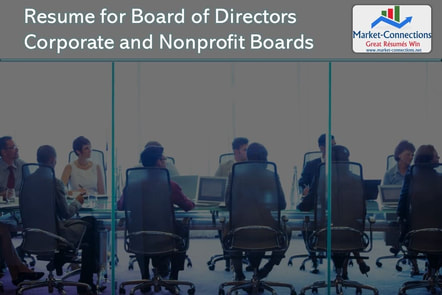
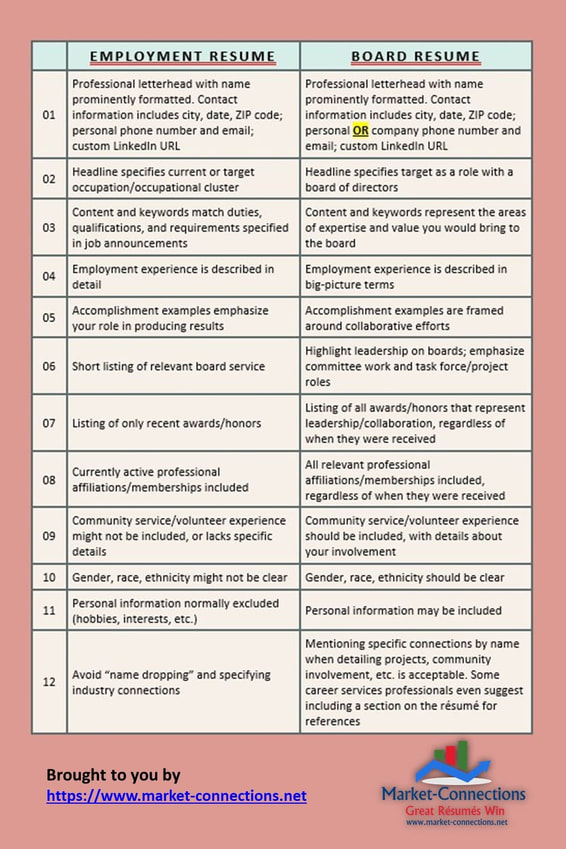
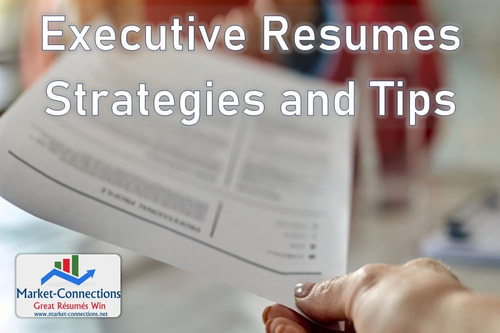



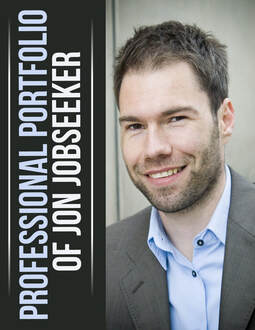
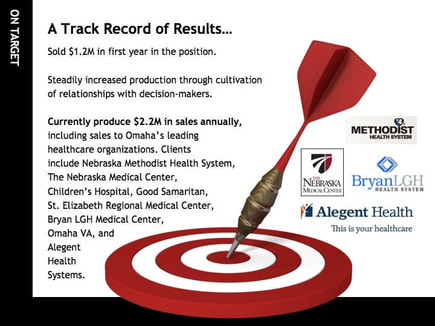
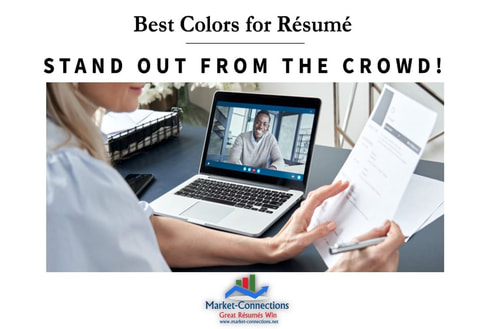
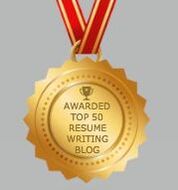

 RSS Feed
RSS Feed



